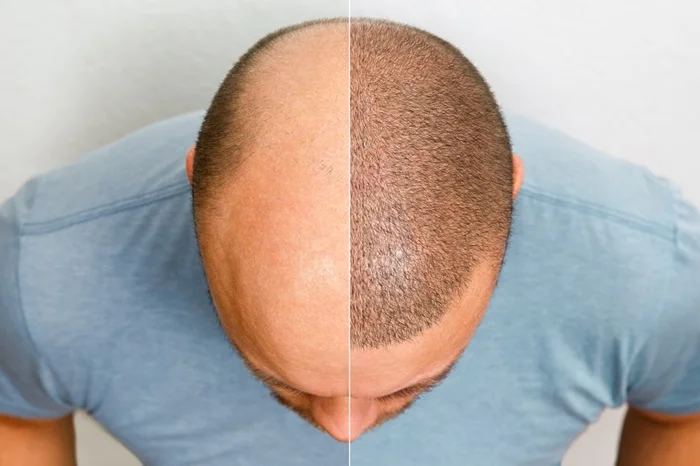Hair loss is a common concern for many individuals, affecting self-esteem and confidence. As a result, hair transplant procedures have gained popularity as a solution for restoring hair. However, one of the most significant considerations for potential patients is the cost of these procedures. Understanding how much a hair transplant costs involves examining various factors, including the type of procedure, the surgeon’s expertise, geographic location, and individual patient needs. This article aims to provide a comprehensive overview of hair transplant costs, helping individuals make informed decisions about their options.
Understanding Hair Transplant Procedures
Before delving into costs, it’s essential to understand the types of hair transplant procedures available. The two primary techniques are Follicular Unit Extraction (FUE) and Follicular Unit Transplantation (FUT).
Follicular Unit Extraction (FUE)
FUE is a minimally invasive technique where individual hair follicles are extracted from the donor area and transplanted to the thinning or balding areas. This method leaves no linear scar, making it a popular choice among patients seeking a natural look. However, FUE can be more time-consuming and labor-intensive than FUT, often resulting in higher costs.
Follicular Unit Transplantation (FUT)
FUT involves removing a strip of skin from the donor area, which contains several hair follicles. The strip is then dissected into individual follicular units for transplantation. While this method can be less expensive than FUE, it leaves a linear scar on the scalp. Patients with extensive hair loss may benefit from FUT due to its ability to harvest a larger number of grafts in one session.
Factors Influencing Hair Transplant Costs
Several factors contribute to the overall cost of a hair transplant. Understanding these variables can help patients anticipate expenses and budget accordingly.
1. Geographic Location
The cost of hair transplants varies significantly based on geographic location. Clinics in metropolitan areas typically charge more due to higher overhead costs, such as rent and salaries. For example, cities like New York or Los Angeles may have higher prices compared to smaller towns or rural areas. Additionally, international destinations known for cosmetic surgery, such as Turkey or India, often offer lower prices due to lower operational costs and competitive markets.
2. Surgeon’s Experience and Reputation
The surgeon’s experience plays a crucial role in determining the cost of a hair transplant. Highly skilled and reputable surgeons may charge more for their services due to their expertise and track record of successful outcomes. Patients should consider investing in an experienced surgeon to ensure quality results, even if it means paying a higher price.
3. Extent of Hair Loss
The severity of hair loss directly impacts the number of grafts required for transplantation. More extensive hair loss necessitates additional grafts, leading to increased costs. Patients should undergo an evaluation to determine their specific needs before receiving a cost estimate.
4. Type of Procedure
As mentioned earlier, the choice between FUE and FUT affects pricing. FUE is generally more expensive due to its meticulous nature and the time involved in extracting individual follicles. In contrast, FUT may be less costly but comes with its own set of considerations regarding scarring and recovery time.
5. Number of Grafts Required
Hair transplant costs are often calculated on a per-graft basis. The average cost per graft can vary widely based on location and clinic reputation—ranging from $1 to $8 per graft in different countries. Therefore, patients should inquire about the total number of grafts needed during their consultation.
6. Facility Fees
In addition to surgeon fees, patients should consider facility charges associated with the procedure. These fees can include anesthesia costs, surgical room rentals, and post-operative care expenses. It’s essential to clarify what is included in the quoted price before proceeding.
7. Additional Costs
Patients should also account for potential additional costs such as pre-operative tests, medications, travel expenses (if applicable), and follow-up appointments after surgery. These factors can significantly influence the overall financial commitment required for a successful hair transplant.
Average Costs by Region
Understanding average costs across different regions can provide valuable insights into what patients might expect when considering a hair transplant.
United States
In the United States, hair transplant costs typically range from $6,000 to $60,000 depending on various factors such as technique used and number of grafts required. The average cost per graft is approximately $6-$8.
Europe
Costs in Europe vary significantly by country:
United Kingdom: Average prices range from £3,000 to £10,000.
Germany: Costs can be around €3,000 to €8,000.
Turkey: Known for its affordability; prices range from $1,500 to $4,000 for comprehensive packages that often include travel arrangements37.
Asia
Countries like India offer competitive pricing:
India: Hair transplant procedures typically range from $400 to $3,800 depending on clinic reputation and technique used.
Thailand: Prices can range from $2,000 to $4,000.
Financing Options
Given the potentially high costs associated with hair transplants, many clinics offer financing options to help patients manage expenses effectively.
Payment Plans
Many clinics provide payment plans that allow patients to spread out payments over time rather than paying upfront in full. This option can make procedures more accessible for those concerned about immediate financial burdens.
Medical Financing Companies
Patients may also explore medical financing companies that specialize in cosmetic procedures. These companies often provide loans specifically designed for medical treatments like hair transplants.
Conclusion
The decision to undergo a hair transplant is significant and requires careful consideration of various factors that influence cost. By understanding these elements—such as geographic location, surgeon experience, extent of hair loss, procedure type, and additional fees—patients can make informed choices that align with their financial situations and aesthetic goals.
While prices can vary widely across regions and clinics—from affordable options in countries like India or Turkey to higher-end services in major U.S. cities—investing in quality care is paramount for achieving satisfactory results. Ultimately, prospective patients should prioritize thorough research and consultations with qualified professionals before committing to any procedure.
Related topic:
How Can I Reverse Wrinkles Naturally?
How Much Does It Cost to Get a Chin Tuck?

